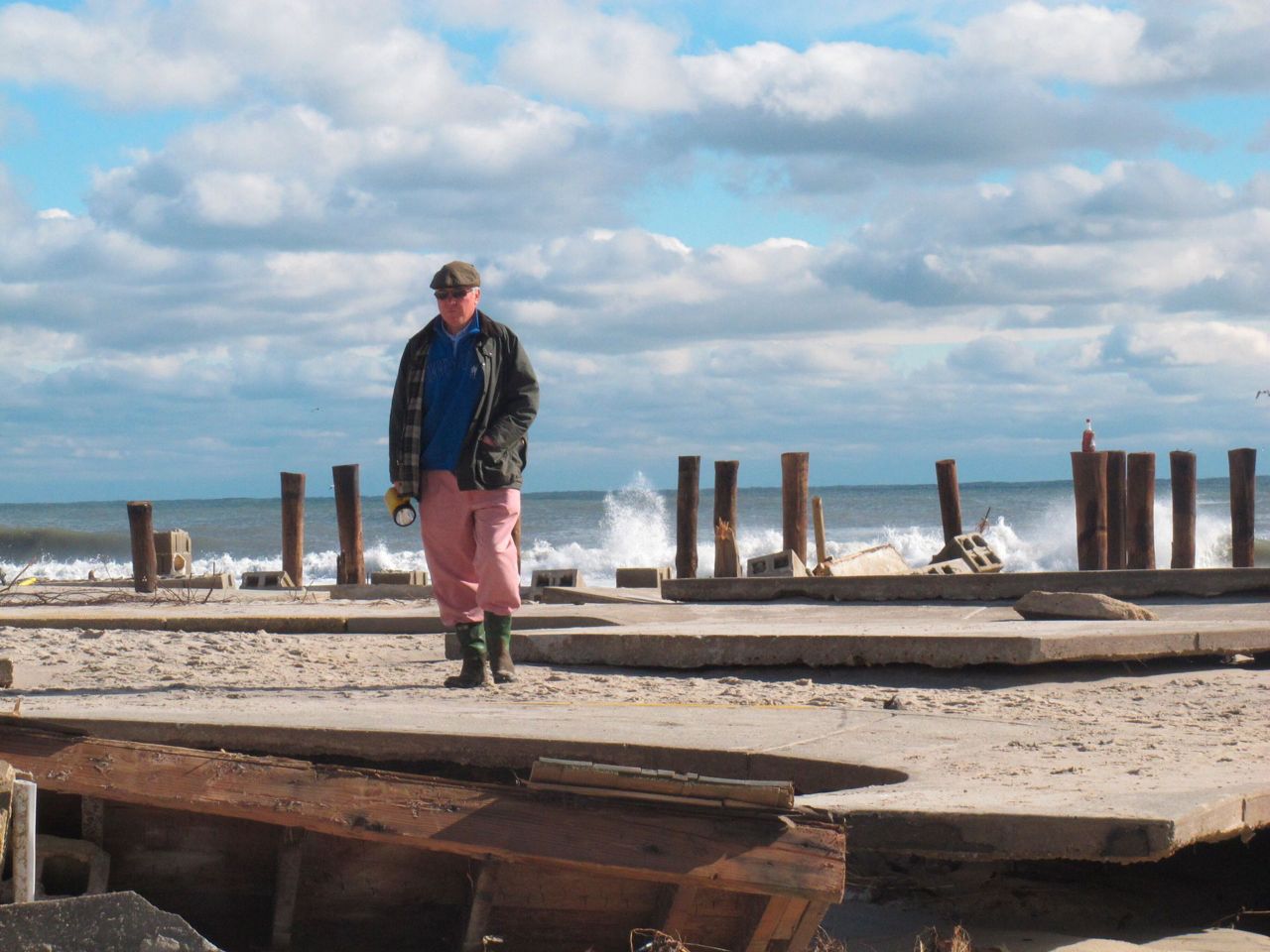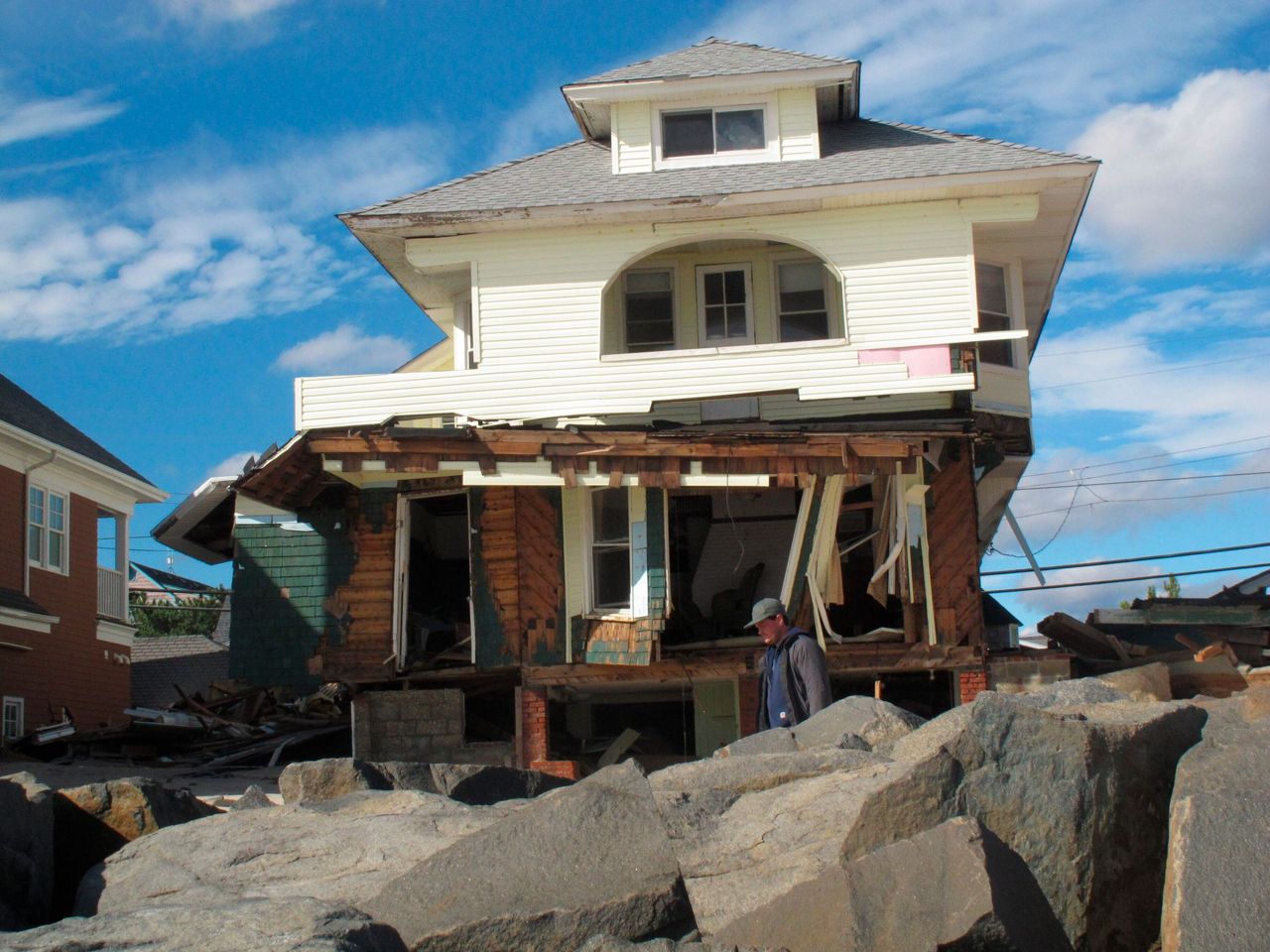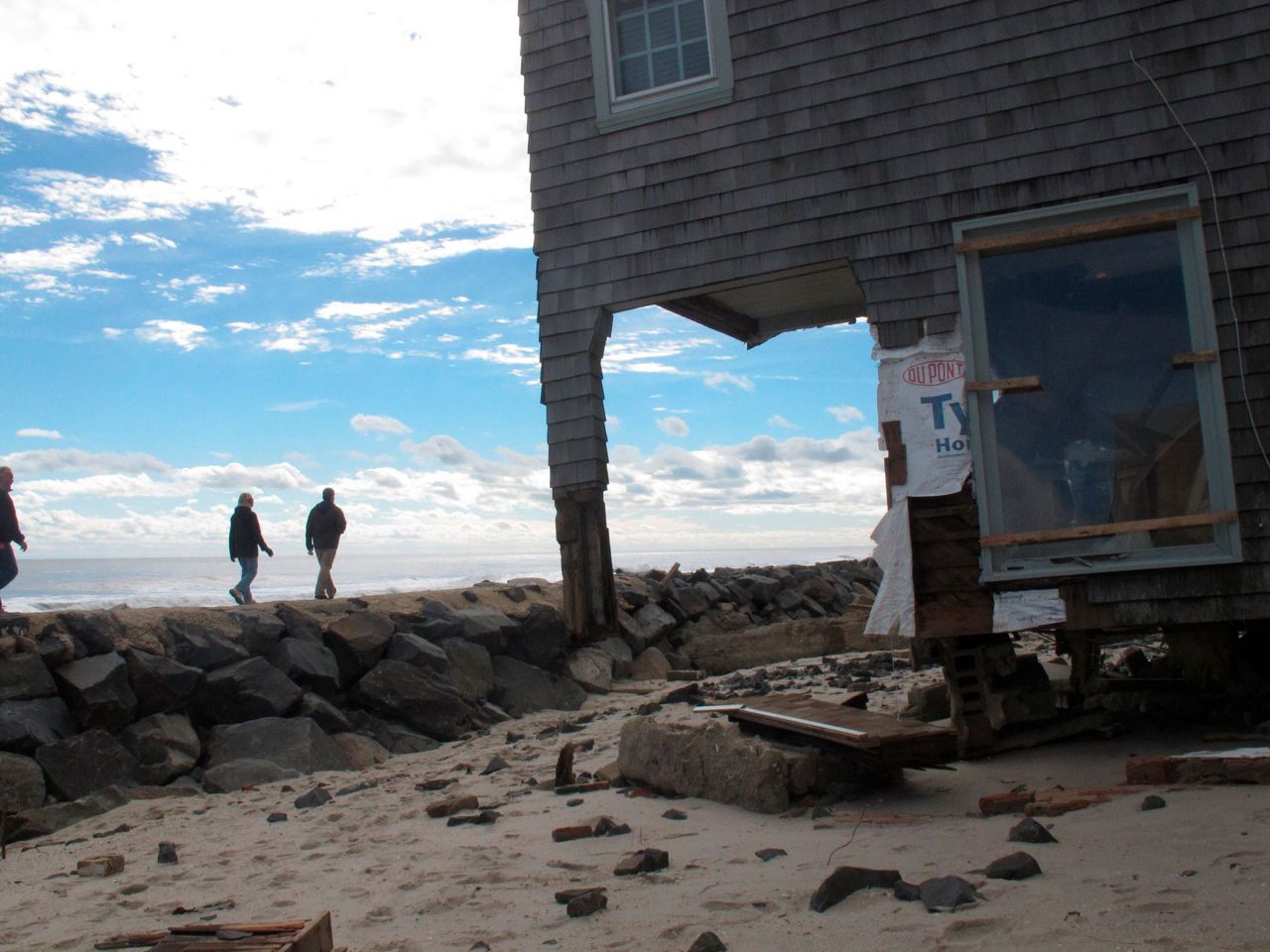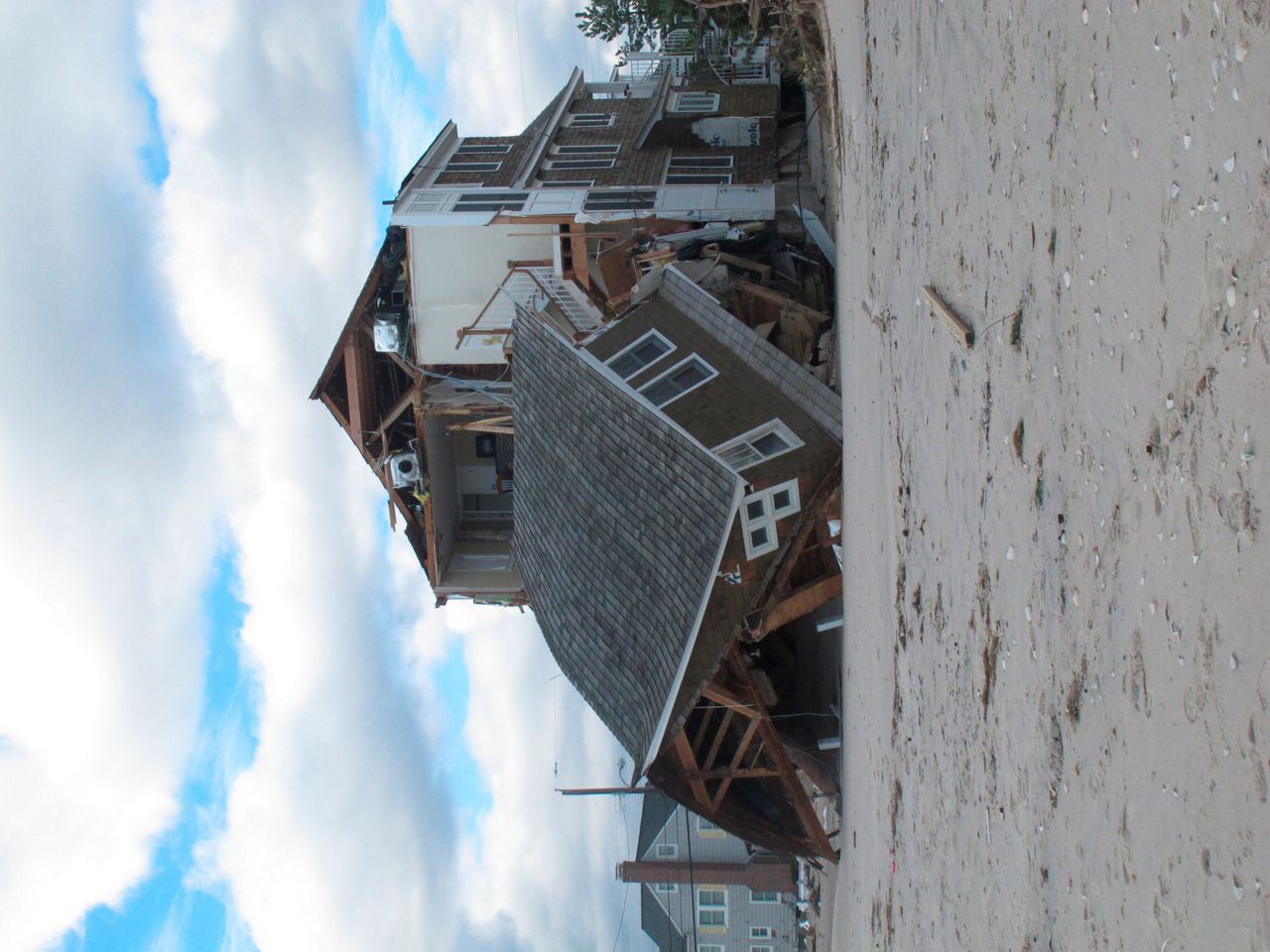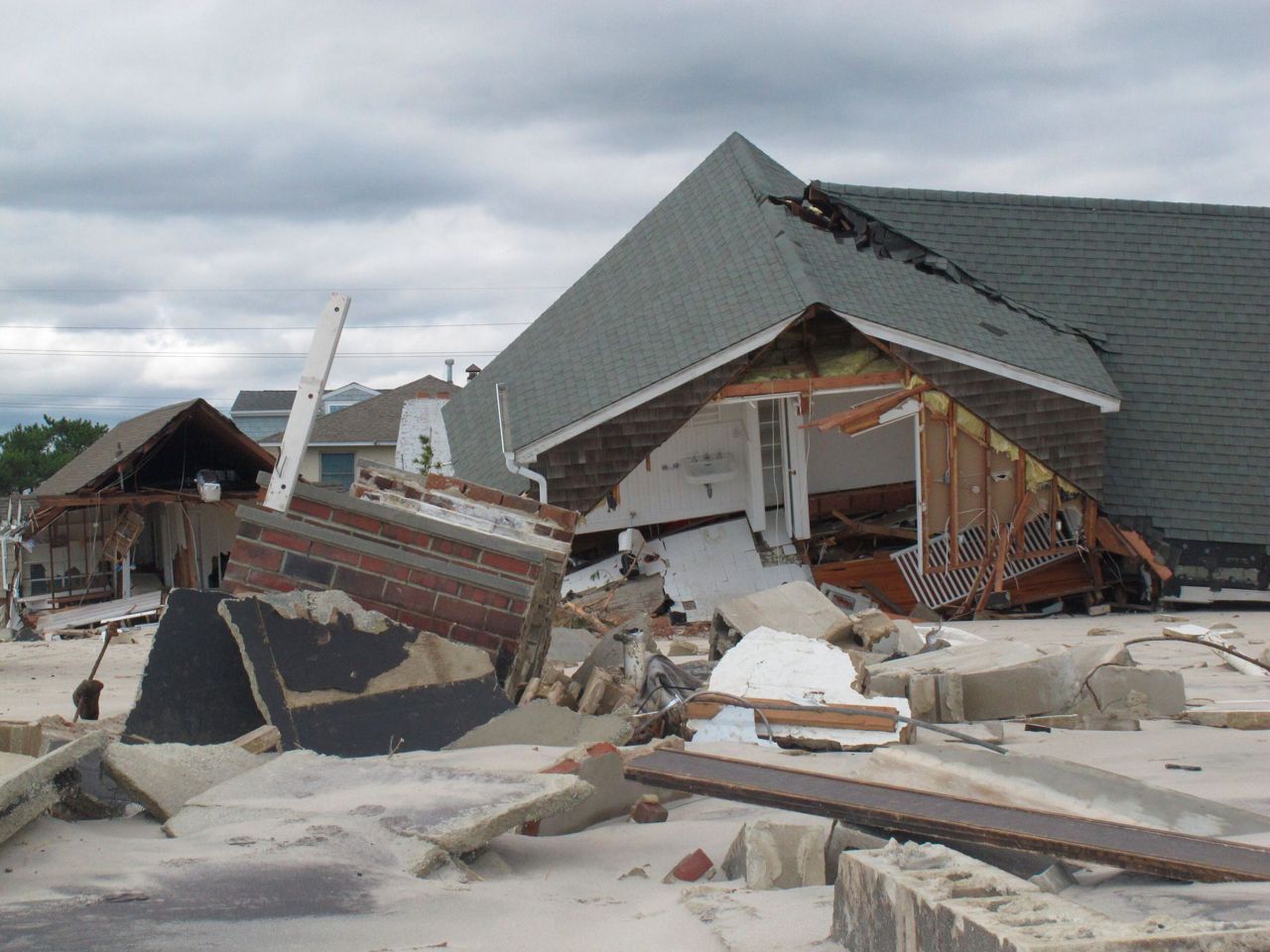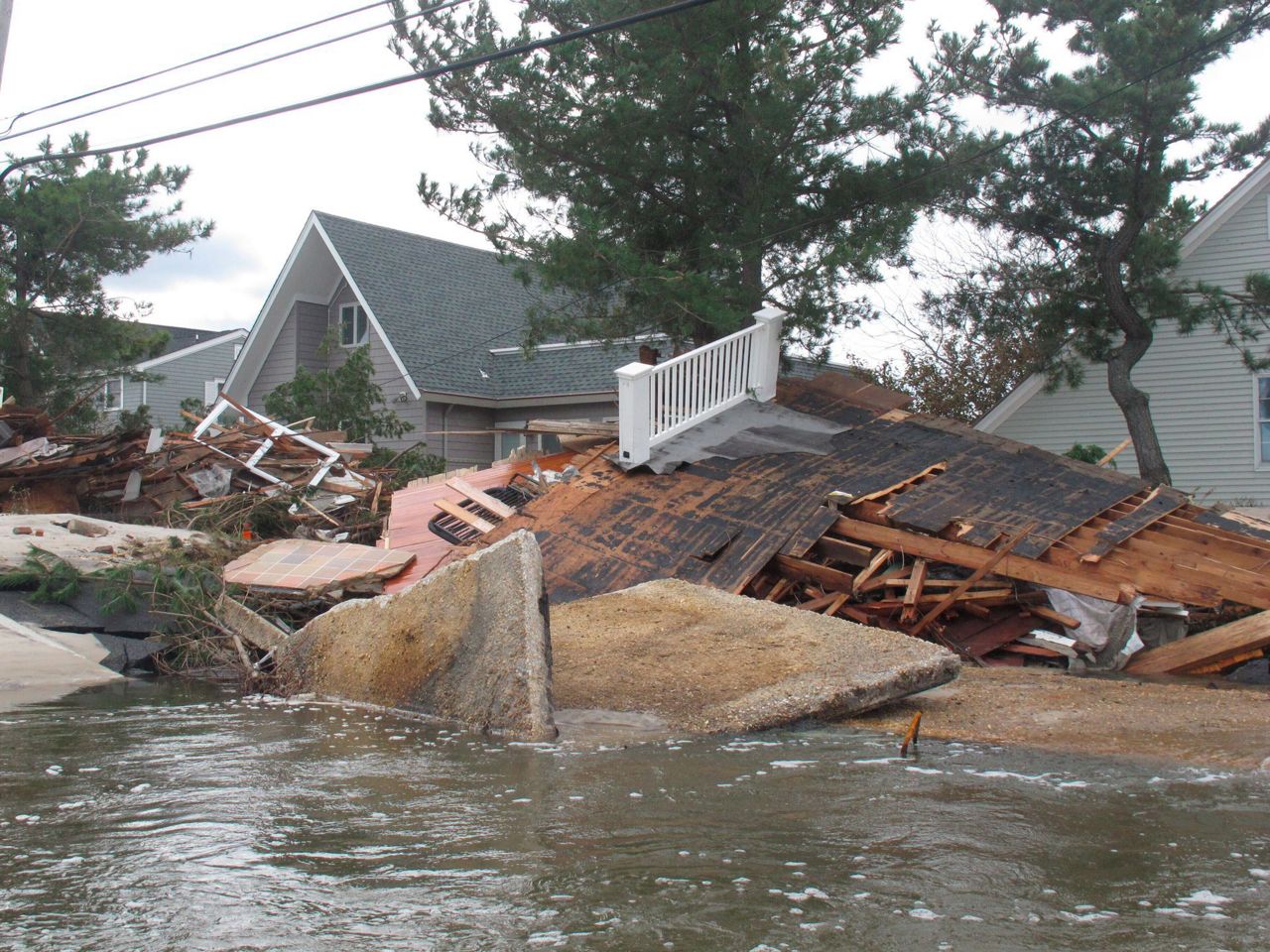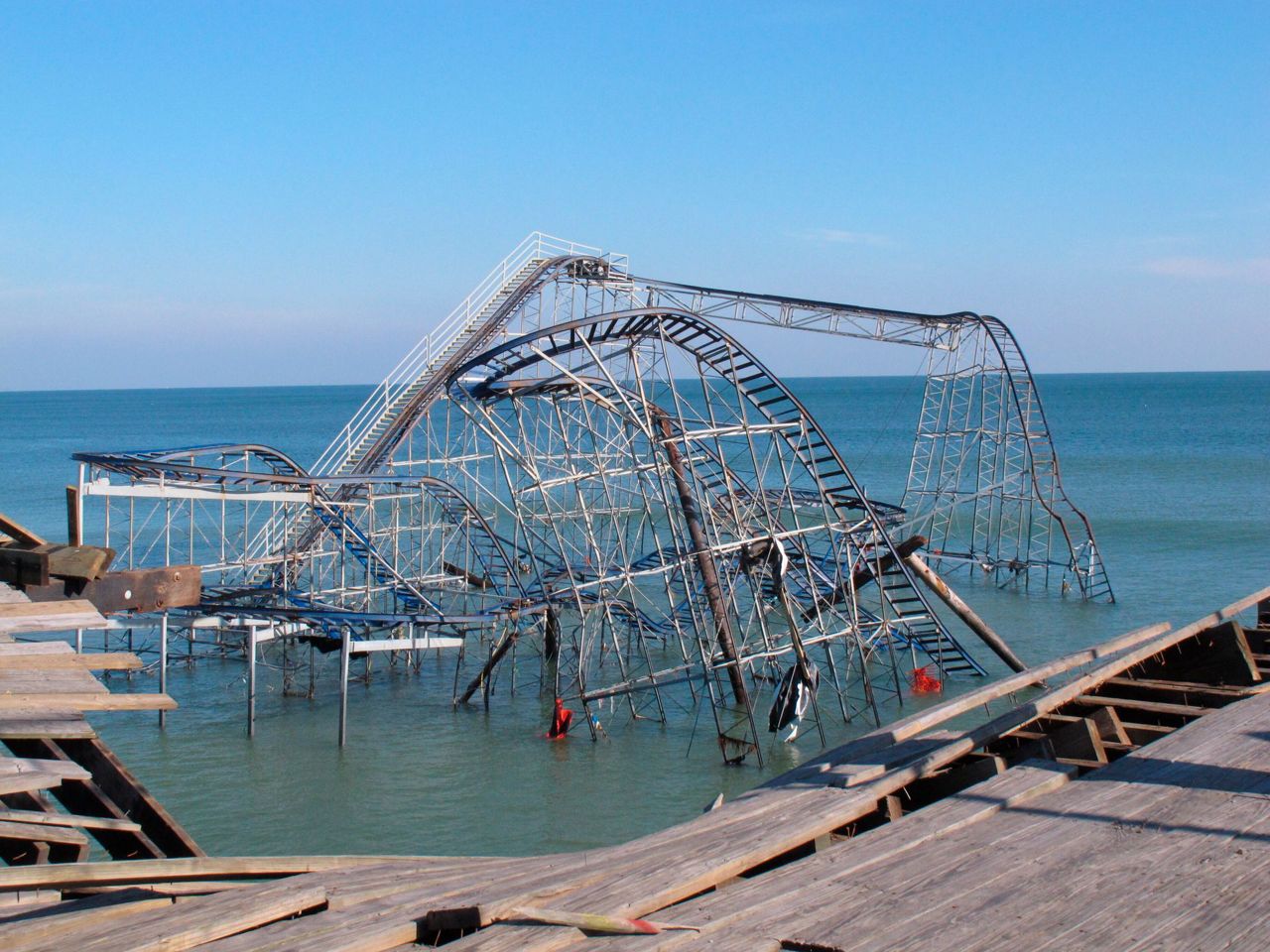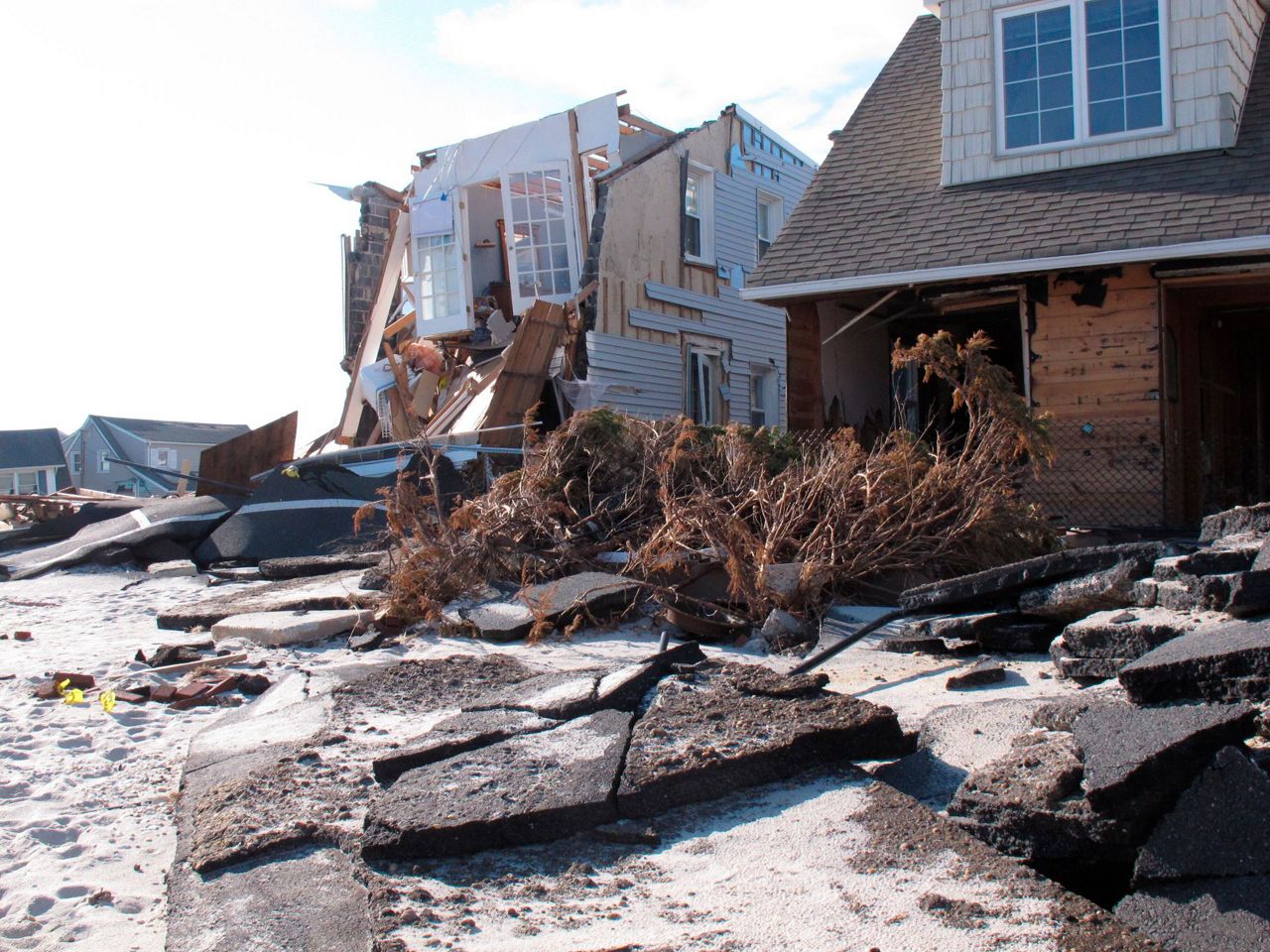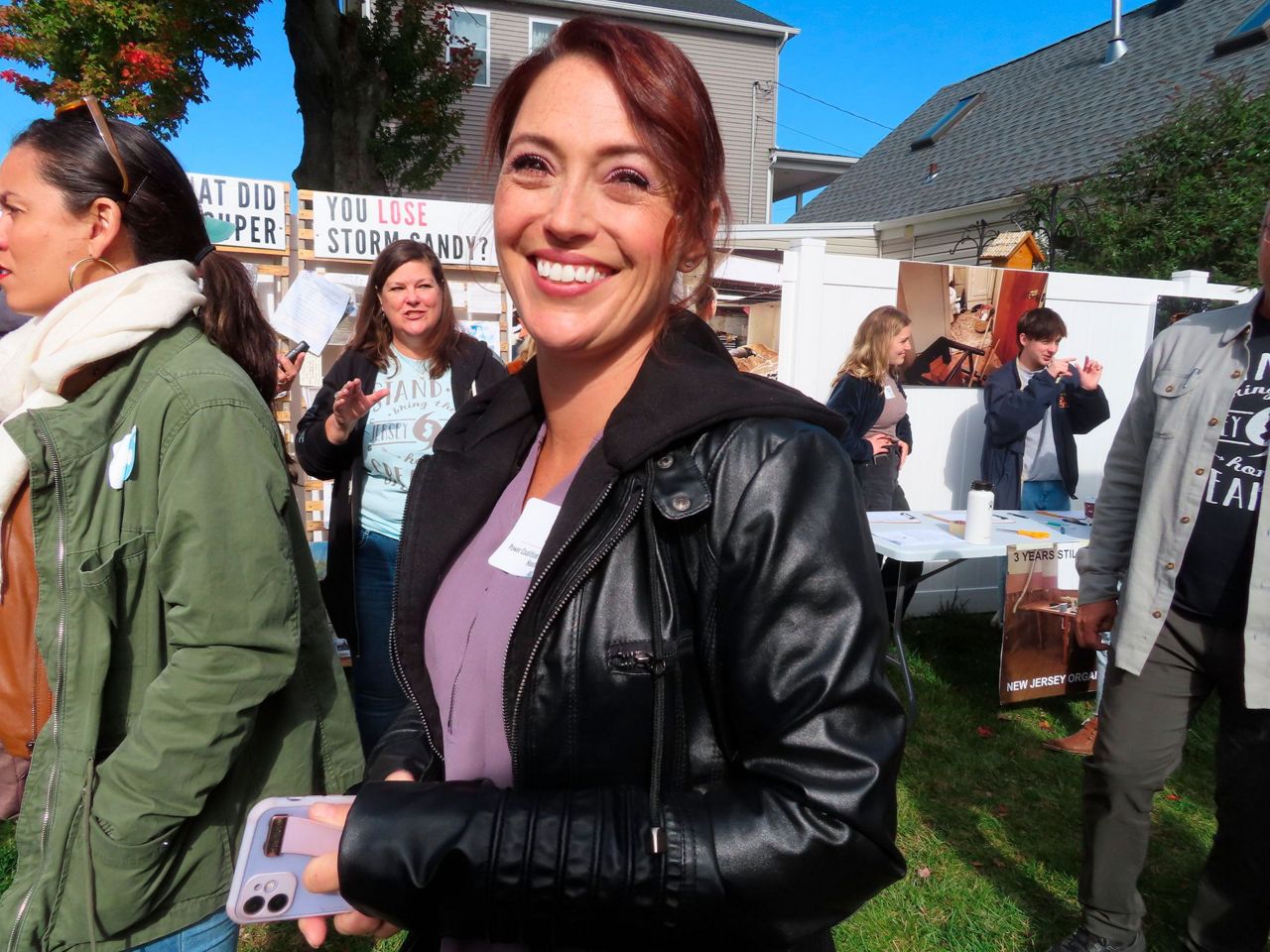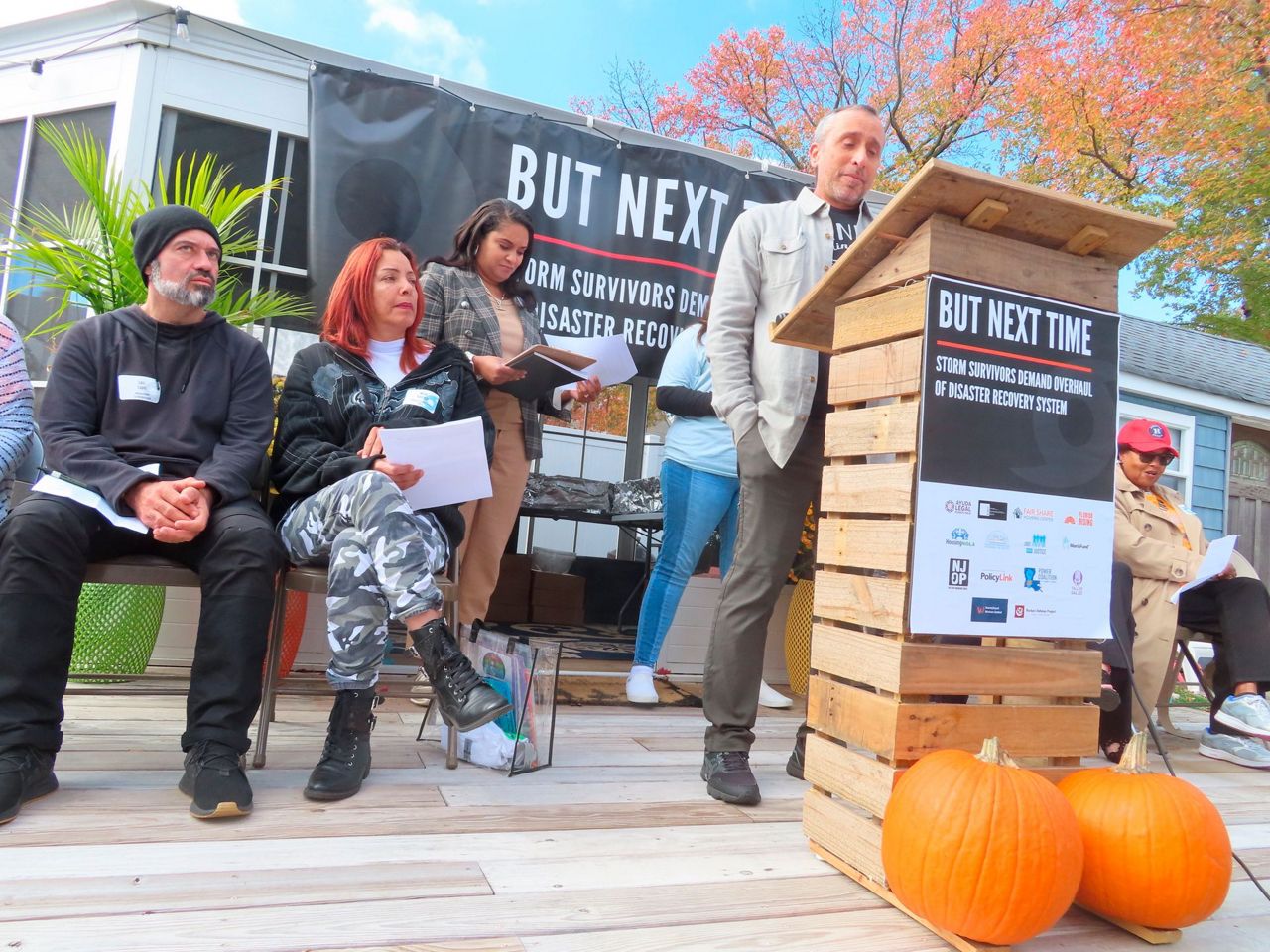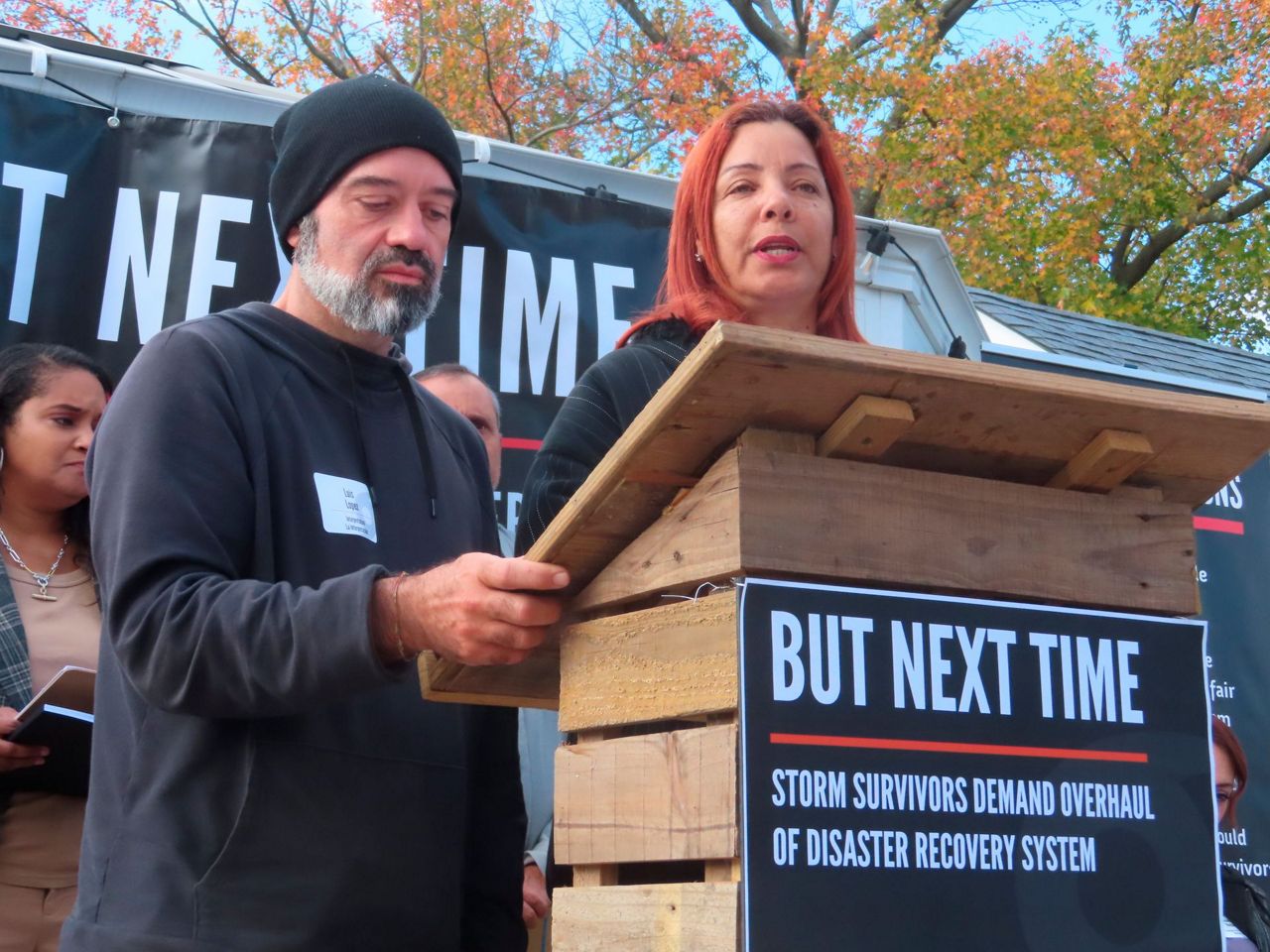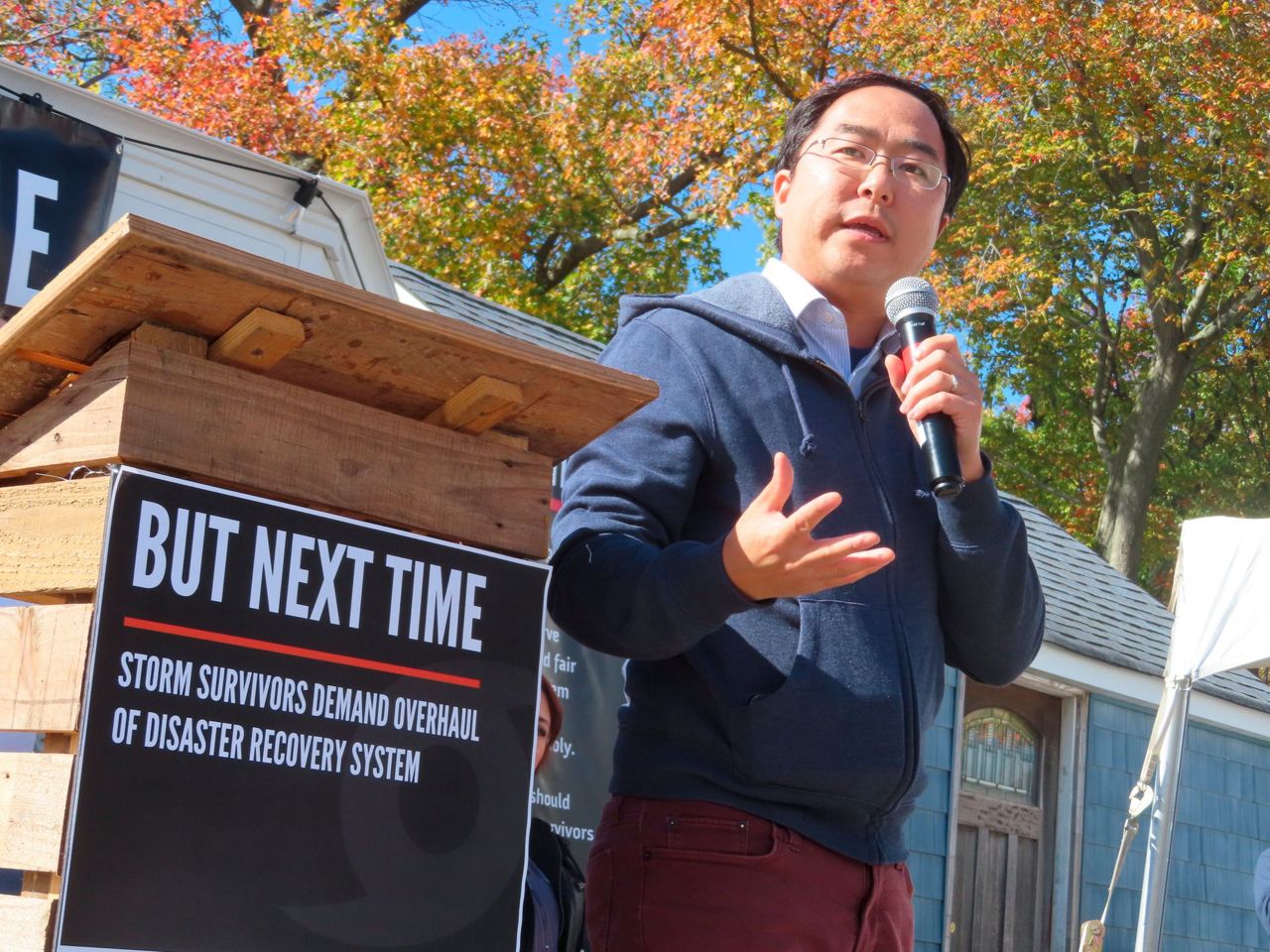MIDDLETOWN, N.J. (AP) — Survivors of storms that pounded several U.S. states say the nation's disaster aid system is broken and that they want reforms to get money into victims' hands faster, with less red tape.
On the 10th anniversary of Superstorm Sandy's landfall at the Jersey Shore, devastating communities throughout the northeast, survivors gathered Saturday with others who went through hurricanes Harvey, Irma, Maria and Ida along with victim advocacy groups from New Jersey, Florida, Texas, Louisiana and Puerto Rico.
Robert Lukasiewicz said Sandy sounded like “a hundred freight trains" as it roared past his Atlantic City, New Jersey, home on Oct. 29, 2012.
Contractor fraud set his recovery efforts back and work by a second contractor stalled because of a lack of funds, Lukasiewicz said. After waiting two years for a government aid program, he said he finally found out he needed to have flood insurance first — the price of which had by then soared to unaffordable levels.
“If all these things had been steps instead of missteps, I could have been home years ago,” he said. “You’ve got different systems that are all butting heads and blaming the other side, when the homeowners and families that all of this was designed for are suffering.”
The survivors and their advocates listed five reforms they say are needed to help future storm victims avoid the type of delays, runarounds and financial desperation they experienced: getting money into people's hands more quickly; ensuring that disaster recovery systems are applied equitably; making flood insurance work for storm victims instead of against them; including future storm resiliency into disaster recovery efforts; and ensuring that disaster recovery is systematic, not piecemeal.
Specific recommendations call for a single point of application for the numerous local, state and federal assistance programs; imposing a smaller cap on annual flood insurance premium rate increases; giving storm victims direct payments and health insurance for a period after the storm; restructuring loan repayment or aid overpayment “clawbacks” to take into account a storm survivor's ability to pay; and paying 100% of mitigation costs upfront for low-income storm victims instead of reimbursing them after they pay for the work.
Joe Mangino, whose Jersey Shore home was damaged by Sandy, co-founded the New Jersey Organizing Project, which brought storm survivors together on Saturday.
“Surviving the actual storm was the easy part,” he said. “There was a disaster after the disaster.”
For Ute Schaefer of Houston, it was the snakes that flowed into her home with flood waters that trapped her inside for four days, banging on windows for help until a passing boat rescued her — and dumped her on the shoulder of a highway.
“All the shelters were full,” she said. “I was on my own.”
She eventually sought help from two local nonprofits that were already out of money. She went to the county, which referred her to the city, which referred her back to the same nonprofits.
“I was grasping for anything, but there was nothing there,” she said.
Shanna Hebert, a single mother from Houma, Louisiana, is about to lose her house that was left unlivable by Hurricane Ida last year. Her one-year mortgage forbearance agreement is ending, and the company wants $17,000 by next week or it will foreclose. She said her insurance company declared bankruptcy, forcing her to buy a trailer with her own money.
Millie Santiago fled Canóvanas, Puerto Rico, for Florida after Hurricane Maria in 2017, only to encounter multiple impediments to emergency aid, including housing.
“They were asking two to three times the normal rent, up front,” she said. “A disaster should not be an opportunity for corporations and contractors to get rich off the suffering of survivors.”
Michael Moriarty, director of the mitigation division of the Federal Emergency Management Agency region that includes New Jersey, said the agency is constantly trying to become more responsive to storm victims.
“That's been the Holy Grail, to get aid to people while their house was flooded,” he said. “That's taxpayer money, so we have to be cautious, not just throwing it away, making sure it gets to the right place and is properly used. We're trying to get to a mechanism that allows for quicker relief.”
He said the idea for a single application point for storm aid is good, but cautioned that federal privacy laws restrict information sharing with state and local governments without first getting signed releases, which can take weeks.
And a post-Ida aid program designed to be fast-tracked so applicants could learn within two weeks whether they had been approved took eight months to be reviewed by federal budget monitors, Moriarty said.
“It was within the first year but not within the goal of the first month,” he said. “I think that will get better and better.”
U.S. Rep Andy Kim, who spoke at Saturday's event with fellow Democrat Rep. Frank Pallone Jr., said what the storm survivors are asking for “makes total sense.”
“You have not gotten what you deserve over the last 10 years,” he said. “What good is a government if it does not stand with people in their time of greatest need? The stories we heard today on this stage should never have happened and should never happen again.”
___
Follow Wayne Parry on Twitter at www.twitter.com/WayneParryAC.
Copyright 2022 The Associated Press. All rights reserved. This material may not be published, broadcast, rewritten or redistributed without permission.



